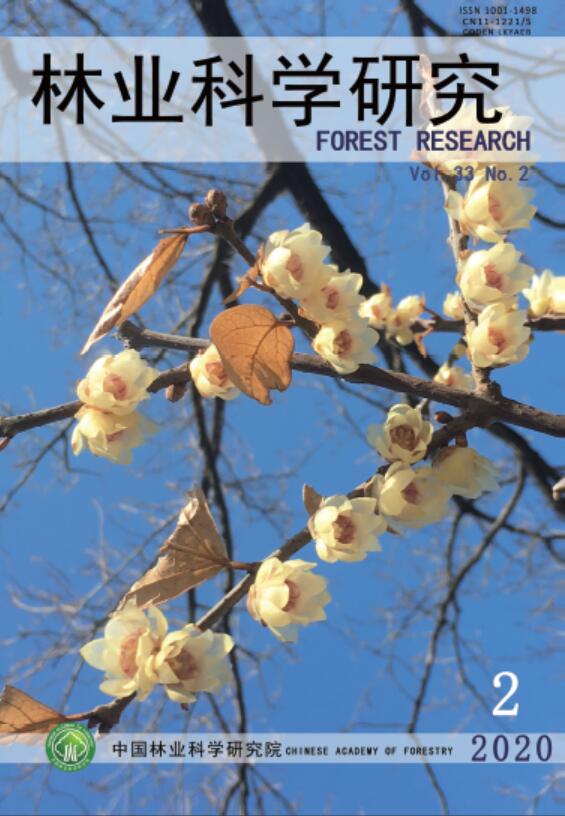-
土壤是陆地生物生存和发展的物质基础,土壤肥力的形成、维持与改良研究一直是生态学的研究热点[1-2]。土壤养分状况受微生物及土壤动物等生物因素的影响[3-5],其中,蚂蚁是土壤节肢动物的优势物种,被称为“土壤生态系统工程师”,能够改变土壤理化性质,调控土壤肥力[6]。蚂蚁通过觅食、筑巢及排泄等活动,能够改变土壤的粒径、孔隙度、含水率及土壤有机质、氮、磷、钾等元素的含量[7-11];同时,蚂蚁筑巢定居可以影响其他生物类群,从而间接影响土壤养分状况[11-13]。
红火蚁(Solenopsis invicta Buren)被列为世界上最危险的100种入侵有害生物之一[14],其适应能力强,扩散速度快[15-16],已在我国华南地区广泛定殖,在林地、草地和荒地等生境均有分布[17-20]。已有研究表明,红火蚁营巢对土壤理化性质均会产生不同影响[21-23];但是目前关于红火蚁营巢对不同生境类型土壤理化性质影响的比较研究报道较少,且主要集中于壤土及粉质黏土[13]。另外,蚁巢类型绝大多数为活动巢,极少关注废弃巢对土壤的影响。因此,以不同生境、不同土壤类型红火蚁活动巢及废弃巢为研究对象,探讨红火蚁营巢对土壤营养元素影响特征具有重要的科学意义。
氮磷钾作为土壤中的主要营养元素,是衡量土壤营养状况、植物生长和生产力的重要指标[24-25]。本研究拟对3种不同生境下红火蚁活动巢与废弃巢中不同土层的全氮、全磷和全钾含量特征进行比较研究。主要探讨以下问题:(1)红火蚁营巢能否对土壤中氮磷钾含量产生显著影响?(2)红火蚁营巢对土壤氮磷钾含量垂直分布的影响是否存在差异?(3)红火蚁营巢对不同土壤类型营养元素含量的影响是否存在差异?
HTML
-
本研究选取林地、荒地和草地3种不同红火蚁生境类型。林地:位于云南省楚雄州牟定县(25°38′36″ N,101°45′03″ E),地处云南省中北部,亚热带季风气候,平均年降水量872 mm,调查区域面积大约9.73 hm2;该地为人工种植林,植被类型单一,主要种植余甘子(Phyllanthus emblica Linn.),地表覆盖稀疏杂草及其他植物,以余甘子植株为中心,在半径20 cm 范围内施农家肥作为底肥;该地土壤类型为红壤土。荒地:位于云南省昆明市官渡区(24°56′5″ N,102°43′37″ E),亚热带高原山地季风气候,平均年降水量1 035 mm,平均气温15℃;海拔1 862~1 895 m,调查区域面积约4.53 hm2,人为干扰较小,地表植被覆盖密集,主要为草本植物,如:野葵(Malva verticillata Linn.)、三叶鬼针草(Bidens pilosa L.)、曼陀罗(Datura stramonium Linn.)等,该地红火蚁蚁巢面积较小,没有形成较高的蚁丘,也没有发现废弃巢;该样地土壤类型主要为砂土。草地:位于云南省昆明市官渡区,地理位置、气候特征与荒地基本一致。调查区域面积大约1.93 hm2,主要为人工绿化草地,有人工对其进行浇水、施肥等管理。草地植被类型单一,杂草稀少,人为活动频繁,干扰严重,人工管理对红火蚁产生了严重影响,蚁巢更替速度快,但该生境蚁巢数量一直保持在一个较高的水平;该样地土壤类型主要为红壤土。
-
2017年11月和2018年3月,利用目光搜寻法和踏查法,在样地内搜寻红火蚁巢。在林地和草地中,分别随机选取10个红火蚁活动巢,在荒地中,随机选取7个红火蚁活动巢。在林地和草地中,分别随机选取5个红火蚁废弃巢,在荒地生境中并未发现废弃巢,故没有荒地废弃巢的土壤样品。活动巢的判定标准为:在蚁丘受到干扰后,有大量工蚁出现在蚁丘表面,在采集土样过程中,蚁巢中大量的工蚁和卵幼存在,这种蚁巢为活动巢。废弃巢的判定标准为:蚁丘表面土壤板结,在受到干扰或采集蚁巢土壤过程中,基本没有红火蚁或者有零星的红火蚁出现,这种蚁巢为废弃巢。在选取蚁巢时,尽量选择密度、高度、直径基本一致的蚁巢,并且蚁巢之间的间距5 m以上。采集蚁巢中心0~15 cm与15~30 cm土层的土壤作为蚁巢土样;对照土样参考Petr等[26]的方法,在距蚁巢2 m左右,从四个方向采集相同厚度的土层土壤,合并混合后作为对照土样。采集土样时,清除地表植物和枯落物,每个土样采集1 kg左右,并将采集好的土样装入自封袋密封,带回实验室置于4℃冰箱中储存备用。
-
土壤样本的制备参考林业行业标准LY/T 1210-1999《森林土壤样品的采集与制备》,将土样自然风干,取风干土样500 g,仔细挑去石块、根茎及各种新生体和侵入体,用研钵研磨,过0.149 mm筛备用。参考林业行业标准LY/T 1228-2015《森林土壤氮的测定》,土壤氮采用凯氏定氮法测定;土壤磷采用酸熔法-钼锑抗比色法测定[27];土壤钾采用酸熔法-火焰光度计法测定[28]。
-
3种不同生境下均采用多因素方差分析方法分析影响土壤氮磷钾含量的因素,在林地和草地中,影响因素分别为蚁巢(蚁巢土、对照土)、蚁巢状态(活动巢、废弃巢)和土层(0~15、15~30 cm)。荒地其影响因素为蚁巢和土层。采用单因素方差分析活动巢与废弃巢、壤土活动巢与砂土活动巢间的差异,采用独立样本T检验分析红火蚁营巢对不同土壤类型(壤土、砂土)的氮磷钾的增加量(与对照土样相比)的影响。单因素方差分析前,对数据进行方差齐性检验。所有数据在SPSS 22.0(IBM)软件下进行分析,利用Excel 2016(Microsoft)对图表进行处理。
2.1. 土壤样品采集
2.2. 土壤氮磷钾测定
2.3. 分析方法
-
表1表明:在林地中,红火蚁营巢对土壤中的氮磷钾含量均影响显著(氮:P< 0.001,磷:P< 0.001,钾:P< 0.001);0~15 cm和15~30 cm土层的氮磷钾含量均差异不显著;活动巢和废弃巢(蚁巢状态)中氮含量差异不显著,而磷和钾含量差异显著(磷:P=0.018,钾:P=0.005)。
生境类型
Habitat type影响因素
Effective factors氮Total nitrogen/(g·kg-1) 磷Total phosphorus/(g·kg-1) 钾Total potassium/(g·kg-1) F P F P F P 林地
Forestland红火蚁营巢Red fire ant nests 27.74 <0.001 20.53 <0.001 18.59 <0.001 土层Soil layer 0.02 0.891 1.76 0.191 0.27 0.607 蚁巢状态Nest state 0.04 0.712 5.1 0.018 15.90 0.005 荒地
Wasteland红火蚁营巢Red fire ant nests 16.92 <0.001 8.60 0.006 12.77 <0.001 土层Soil layer 0.01 0.911 0.7 0.409 0.75 0.393 草地
Grassland红火蚁营巢Red fire ant nests 18.96 <0.001 119.65 <0.001 13.03 <0.001 土层Soil layer 0.01 0.963 2.14 0.152 0.84 0.365 蚁巢状态Nest state 0.49 0.418 12.98 <0.001 6.47 0.015 注:具有显著性水平的P值(P< 0.05或0.01)以粗体表示。
Note: Significant P−values (P< 0.05 or 0.01) were indicated in bold.Table 1. Analysis of factors effecting soil nitrogen,phosphorus and potassium concentration in three habitats
在荒地中,红火蚁营巢对土壤中的氮磷钾含量的影响差异显著(氮: P< 0.001,磷: P=0.006,钾: P< 0.001),0~15 cm和15~30 cm土层的氮磷钾含量均差异不显著。
在草地中,红火蚁营巢对土壤中的氮磷钾含量的影响均差异极显著(氮: P< 0.001,磷: P< 0.001,钾: P< 0.001),活动巢和废弃巢中氮含量差异不显著,而磷含量差异极显著,钾含量差异显著(P=0.015),0~15 cm和15~30 cm土层的氮磷钾含量均差异不显著(表1)。
由以上结果可知:在林地、荒地和草地3种生境中,红火蚁的营巢可以显著影响土壤中氮磷钾的含量,而蚁巢状态只对土壤中的磷和钾含量产生影响,对氮元素的含量没有影响;3种生境下,不同土层的氮磷钾含量均差异不显著。
-
表2表明:在林地中,红火蚁活动巢中的氮磷钾含量均极显著高于对照土壤(氮:F=6.23,P< 0.001;磷:F=6.54,P=0.007;钾:F=2.01,P< 0.001),氮磷钾含量分别提高了30.69%、15.08%、50.00%。废弃巢中的氮磷钾含量也极显著或显著高于对照土壤(氮:F=1.57,P< 0.001;磷:F=10.09,P=0.002;钾:F=1.74,P=0.017),氮磷钾含量分别提高了40.89%、26.40%、46.15%。
生境类型
Habitat types蚁巢状态
Nest state土壤类型
Soil types氮 /(g·kg-1)
Nitrogen磷 /(g·kg-1)
Phosphorus钾 /(g·kg-1)
Potassium林地
Forestland活动巢Active nest 壤土Loam 54.59±2.88A 1.45±0.05Ab 0.27±0.02B 对照CK 壤土Loam 41.77±1.70B 1.26±0.05B 0.18±0.02C 废弃巢Abandoned nest 壤土Loam 55.65±3.11A 1.58±0.07Aa 0.38±0.04Aa 对照CK 壤土Loam 39.50±2.89B 1.25±0.06B 0.26±0.03b 荒地
Wasteland活动巢Active nest 砂土Sand 49.97±5.97A 1.61±0.03A 0.12±0.01A 对照CK 砂土Sand 21.08±3.37B 1.49±0.03B 0.06±0.01B 草地
Grassland活动巢Active nest 壤土Loam 151.03±16.03A 2.87±0.10A 0.34±0.06Aa 对照CK 壤土Loam 85.15±11.58B 1.52±0.05C 0.15±0.01B 废弃巢Abandoned nest 壤土Loam 154.42±10.30A 2.04±0.05B 0.18±0.02b 对照CK 壤土Loam 100.95±9.21B 1.84±0.04C 0.13±0.01c 注:在同一生境条件下,同列中不同大写字母表示差异极显著(P< 0.01),不同小写字母表示差异显著 (P< 0.05)。
Notes: In the same habitat, different uppercase letters under the same nutrient composition indicate extremely significant difference (P< 0.01), and different lowercase letters indicate significant difference(P< 0.05).Table 2. Nitrogen, phosphorus and potassium concentration in different habitats and different ant nest state
在荒地中,活动巢中的氮磷钾含量均显著高于对照土壤(氮:F=4.083,P< 0.001;磷:F=10.21,P=0.005;钾:F=13.867,P< 0.001),氮磷钾含量分别提高了137.05%、8.05%、100.00%
在草地中,红火蚁活动巢中的氮磷钾含量均极显著高于对照土壤(氮:F=2.558,P=0.003;磷:F=4.496,P< 0.001;钾:F=6.356,P=0.003);氮磷钾含量分别提高了77.37%、88.82%、126.67%。废弃巢中的氮磷和钾含量极显著或显著高于对照土壤(氮:F=0.52,P< 0.001;磷:F=0.92,P< 0.001;F=0.258,P=0.027)。
对红火蚁活动巢和废弃巢中的氮磷钾比较得出:在林地中,活动巢与废弃巢中的氮含量差异不显著(F=1.666,P=0.822);废弃巢中的磷和钾含量显著高于活动巢(磷:F=5.13,P=0.018;钾:F=3.098,P=0.005),分别提高了8.97%和40.74%。在草地中,活动巢与废弃巢的氮含量差异不显著(F=7.621,P=0.860),活动巢中的磷和钾含量显著高于废弃巢(磷:F=3.420,P< 0.001;钾:F=3.689,P=0.026),分别提高了40.69%和88.89%。
红火蚁营巢显著增加了土壤中的氮磷钾含量,即使蚁巢废弃后,土壤中的氮磷钾含量依然显著高于没有蚂蚁营巢的对照土壤。废弃巢和活动巢的氮含量没有发生显著变化,磷和钾含量在林地和草地中呈现不同的变化趋势,在林地中,活动巢的磷和钾含量显著低于废弃巢;而在草地中,活动巢的磷和钾含量显著高于废弃巢。
-
图1表明:壤土活动巢与砂土活动巢氮的增加量差异不显著(t=0.494,P=0.624);而壤土活动巢磷和钾的增加量均极显著高于砂土活动巢(磷增加量:t=3.353,P=0.002;钾增加量:t=2.818,P=0.007),壤土活动巢磷和钾的增加量比砂土活动巢分别提高了500%和139%。
3.1. 三种生境中影响土壤氮磷钾含量的方差分析
3.2. 土壤中氮磷钾含量在不同生境和不同蚁巢状态中的变化规律
3.3. 红火蚁活动巢对不同土壤类型氮磷钾含量的影响
-
蚂蚁筑巢定居活动能够显著增加土壤中营养元素含量。研究表明,蚁巢内土壤氮磷钾含量显著高于蚁巢周围土壤,不同蚂蚁种类对土壤的影响能力存在差异[29-31]。Cammeraat等[32]研究发现,收获蚁(Messor bouvieri)蚁巢氮磷钾含量分别比对照土样提高了300%、571%、147%。本研究中,在林地、荒地和草地3种生境中,红火蚁巢中土壤氮磷钾含量均高于蚁巢周围土壤,3种元素分别最高提升了137.05%、88.82%、126.67%。红火蚁与收获蚁对土壤肥力的影响存在一定的差异,这可能与2种蚂蚁在食性、种群大小以及筑巢方式等特征密切相关。红火蚁在觅食过程中将动物尸体和植物残渣搬入蚁巢内以及排泄物在蚁巢内的堆积导致了土壤养分在蚁巢内的富集[8]。国内有研究表明,红火蚁营巢会提升土壤中的速效K含量(120%),但是会降低碱解N(65.9%)和有效P(67.9%)的含量[33]。笔者在土壤养分指标测定时主要考虑了红火蚁对土壤中全氮、全磷和全钾的影响,对于土壤肥力有较大影响的其他指标如有机质、速效氮、速效磷和速效钾等则没有测定,在后续研究中应进行补充,以期更全面地了解红火蚁对土壤肥力的影响。
蚁巢废弃依然对土壤理化性质产生显著影响,但影响力减弱[32,34-35]。本研究中,红火蚁巢废弃后,废弃巢内的氮磷钾含量依然显著高于蚁巢周围土壤,主要是由于蚂蚁活动停止后土壤养分含量的降低,需要随着时间的推移逐渐减少[32];但较活动巢相比,氮含量没有发生明显的改变,磷和钾含量发生改变,这可能与氮在土壤中大部分以腐殖质存在,不易分解被植物吸收,而磷在土壤中以有机和无机形式并存,一部分被植物吸收,钾以无机的形式存在,能够很快被植物吸收有关[36]。在林地和草地中,磷钾在活动巢与废弃巢中呈不同的变化趋势,这可能与土地利用方式有关,草地为城市绿化草坪,人工管护提高了土壤含水率,降低了磷和钾浓度[37]。
蚂蚁在不同土壤类型下营巢对土壤养分含量的影响程度存在差异。Lafleur等[13]研究表明,红火蚁在壤土、砂质壤土和粉质黏土中活动,对土壤磷含量分别提高了46%、33%、18%,壤土中的提升能力高于其他类型土壤。本研究中,壤土活动巢氮的增加量与砂土活动巢无显著差异,而磷和钾的增加量均极显著高于砂土活动巢,分别提高了500%、139%。这可能与红火蚁筑巢对土壤类型的选择有关,砂质土壤稳固性差,易受侵蚀,红火蚁的蚁巢更新速度快,对土壤氮磷钾含量的改良时间短[38-39]。另外,相较于壤土,砂土团粒结构差,有机质缺乏,保水保肥能力也差,这可能也是造成这种差异的原因。
在本研究中,林地、荒地和草地3种生境下植被类型和植物多样性均有很大的差异,而植被类型和植物多样性也是影响土壤理化性质的一个重要因素[40-41]。蚂蚁的营巢活动会与入侵地的植被类型和植物多样性产生相互影响[5, 12],这种交互作用又是如何影响土壤营养元素的,还有待进一步研究。
-
红火蚁在林地、荒地和草地中营巢均能显著提高土壤氮磷钾含量,但土壤氮磷钾含量还受到蚁巢状态和土壤类型的影响。活动巢废弃后,氮含量没有发生明显改变,磷和钾含量在林地和草地中呈现不同的变化趋势。红火蚁在壤土中营巢对土壤磷和钾的影响幅度高于砂土。







 DownLoad:
DownLoad: